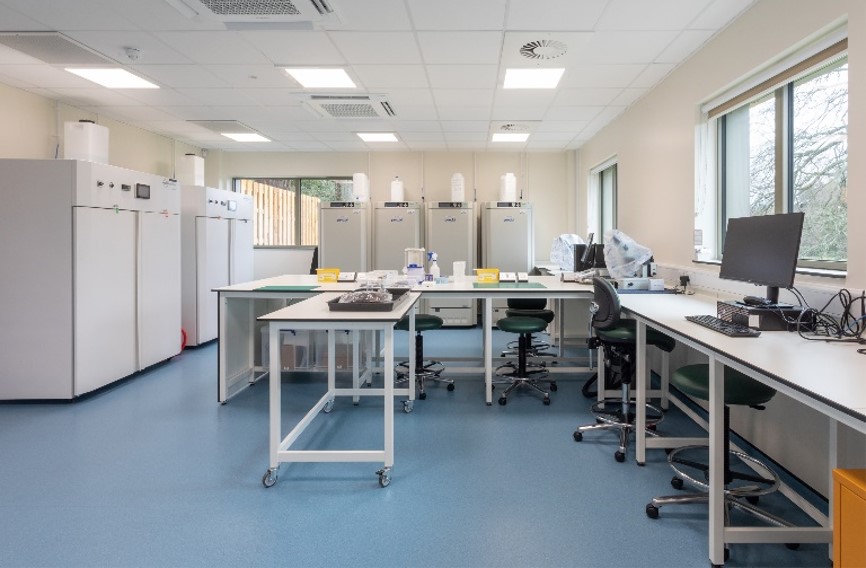In May 2022, our state-of-the-art containment laboratory for identifying tree pests and diseases and conducting innovative research was officially opened.
The £5.8 million Forest Research Holt Laboratory, part of Alice Holt Research Station in Surrey, allows our scientists to identify pests and pathogens intercepted at the border and detected during surveillance and outbreaks in GB, and to undertake research on pests and pathogens which could be detrimental or seriously damaging to our forests in the future. This work will inform UK-wide efforts to combat ongoing pest and disease outbreaks, including, Ips typographus, Phytophthora ramorum and Phytophthora pluvialis, as well as emerging potential threats from abroad as a result of our changing climate, such as emerald ash borer and Asian longhorn beetle.


The Holt Laboratory represents a significant expansion of the UK’s capacity and capability to combat tree pests and diseases and manage emerging threats, including climate change. By assessing the pests and pathogens in a contained laboratory, scientists from Forest Research will be able to study them in a safe and controlled manner using cutting-edge technology and equipment.
In addition to official inspections and active surveillance conducted by the official forestry agencies, a high number of reports are received as a result of unplanned or casual observations made by members of the public and tree professionals. Recent statistics released by Forest Research show a record number of tree pests and diseases are being reported. Our TreeAlert service received 3790 reports from the public over the past year (April 2021 to March 2022) – almost a 25% increase on the previous year. The most commonly reported pest and disease were oak processionary moth and ash dieback, respectively.

Public vigilance is a key part of the fight against tree pests and diseases. You can help us by looking out for any unusual symptoms – like leaf discolouration or ‘bleeding’ lesions – on trees and reporting any sightings via TreeAlert, our online tree pest and disease reporting tool.
For additional information, please contact our Tree Health Diagnostic and Advisory Service.